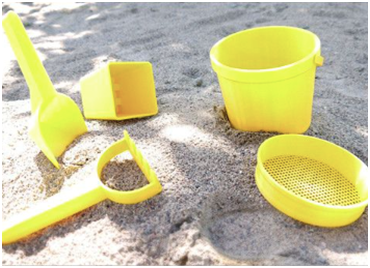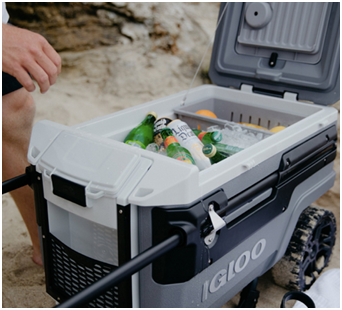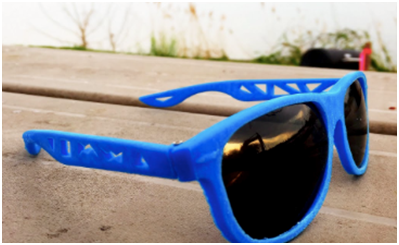
Charles R. Goulding and Alyssa Schneider enjoy the summer sun with 3D printing.
With the COVID-19 pandemic taking over the summer, the current advice given to stay safe is to remain outdoors and socially distanced from others. Beaches are becoming a very popular hot spot for people to enjoy and relax outside while simultaneously keeping a safe distance from others. Studies have shown that with very high temperatures, a blazing sun, and strong winds, airborne virus will diminish quickly and disperse into the air.
Although the beach is one of the safer places to be, there are still many rules and regulations to follow to help prevent the spread of this virus. For instance, face masks must be worn when entering the beach until people find an area at least six feet apart from others to sit. Additionally, the number of people entering may be limited by only allowing a certain number of cars into the parking lot at a time. Moreover, ocean access and shops around may be closed or limited depending on the rate of people infected with coronavirus in that state.
3D Printing for Beach Gear
With beaches becoming very popular this summer, beach gear and accessories are in high demand and selling out fast. 3D printing these beach day essentials can help to quickly and effectively produce many products in bulk with high quality. Sunglasses, umbrellas, chairs, toys, sandals, coolers, and even cameras can all be created with a 3D printer.

Coolers in particular have been popular amongst beach gear to 3D print. Examples of cooler developments include two major players in Grizzly and Igloo coolers. Both companies have spent extensive resources on 3D printing accessories and parts. This includes utilizing material that is UV- and water-resistant to keep drinks cooler and improve the lifespan of the cooler itself.
3D printing allows for unique and diverse products to help satisfy the buyer. Beach gear can be produced faster and more cost-effective to grow and expand the markets. The beach will start becoming a favored location to gather given that the markets are fully stocked with gear and it is a relatively safe place to gather during this pandemic.

The Research and Development Tax Credit
Whether it’s used for creating and testing prototypes or for final production, 3D printing is a great indicator that R&D Credit eligible activities are taking place. Companies implementing this technology at any point should consider taking advantage of R&D Tax Credits.
Enacted in 1981, the now permanent Federal Research and Development (R&D) Tax Credit allows a credit that typically ranges from 4%-7% of eligible spending for new and improved products and processes. Qualified research must meet the following four criteria:
- Must be technological in nature
- Must be a component of the taxpayer’s business
- Must represent R&D in the experimental sense and generally includes all such costs related to the development or improvement of a product or process
- Must eliminate uncertainty through a process of experimentation that considers one or more alternatives
Eligible costs include US employee wages, cost of supplies consumed in the R&D process, cost of pre-production testing, US contract research expenses, and certain costs associated with developing a patent.
On December 18, 2015, President Obama signed the PATH Act, making the R&D Tax Credit permanent. Beginning in 2016, the R&D credit can be used to offset Alternative Minimum tax for companies with revenue below $50MM and, startup businesses can obtain up to $250,000 per year in payroll tax cash rebates.
Conclusion
The COVID-19 pandemic being present throughout the hot summer is making the beach a very popular place to be. 3D printing is helping to stock up the markets on beach gear and accessories and getting the products out to the consumers in a timely fashion. The beach is a great location to be if everyone is maintaining distance and following the proper precautions.
